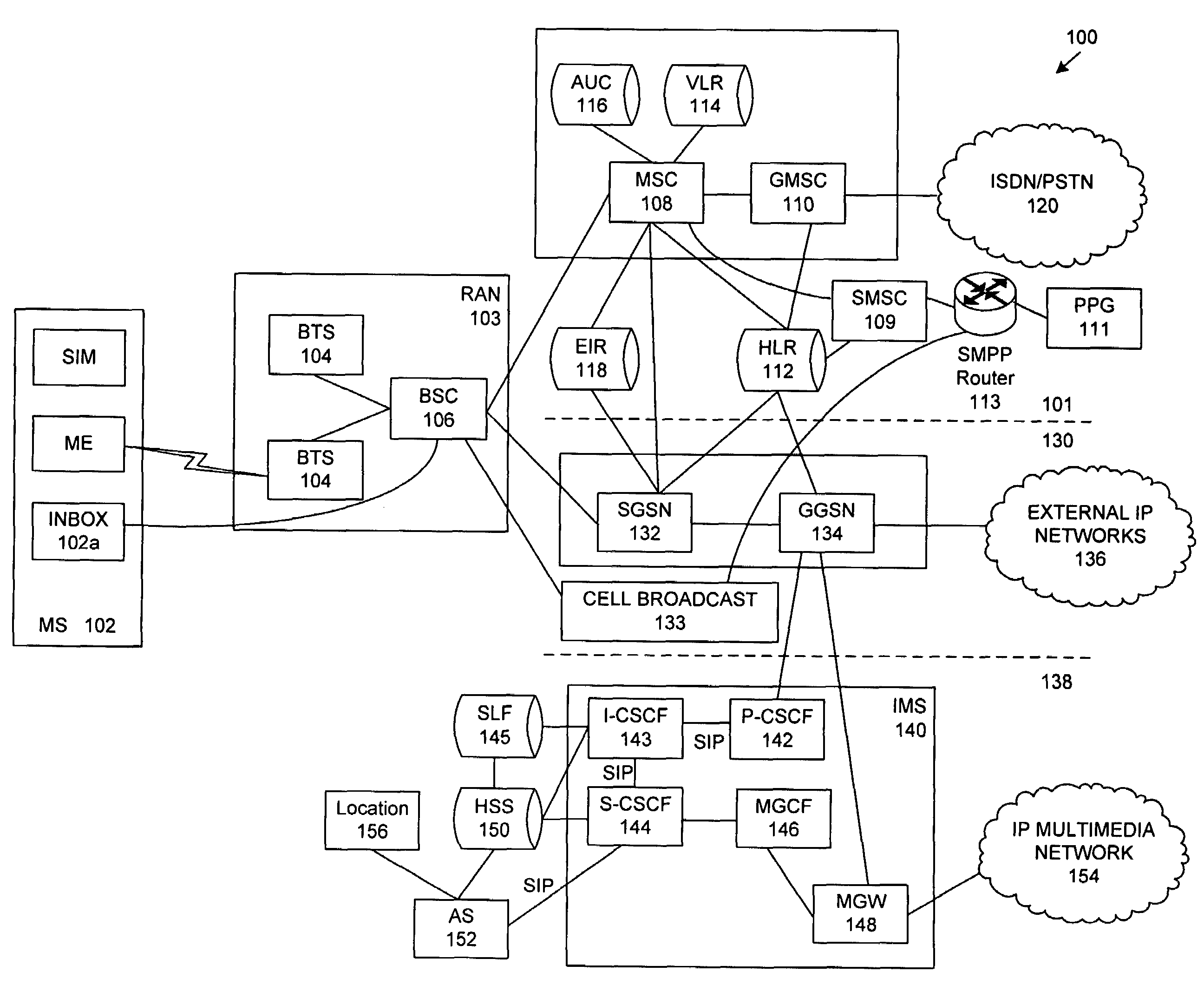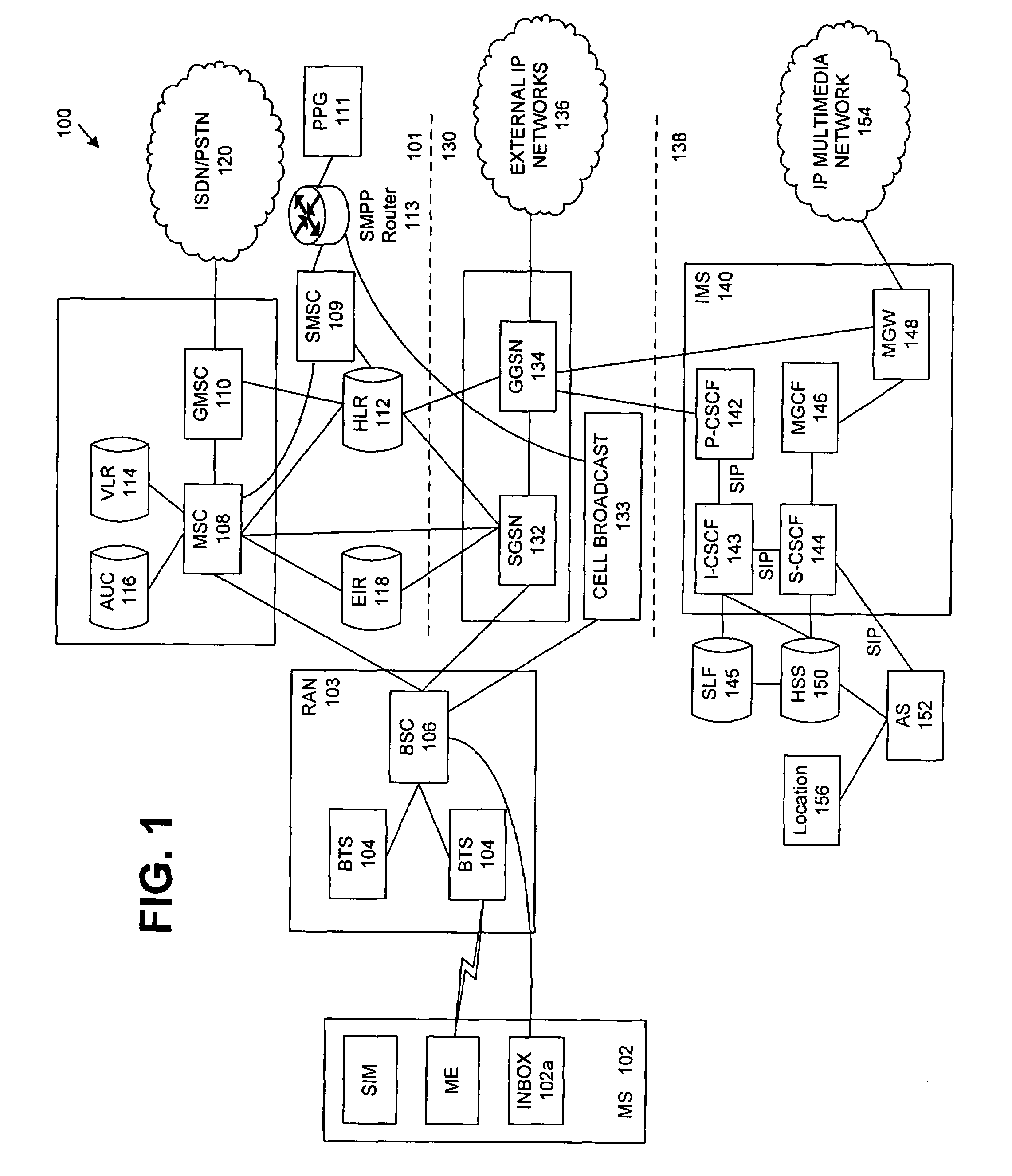WAP push over cell broadcast
a cell broadcast and push technology, applied in the field of wireless services, can solve the problems of reducing the usefulness of cell broadcast functionality, limiting the amount of information that can be conveyed, and inability to communicate additional information via cell broadcas
- Summary
- Abstract
- Description
- Claims
- Application Information
AI Technical Summary
Benefits of technology
Problems solved by technology
Method used
Image
Examples
Embodiment Construction
[0008]FIG. 1 shows a GSM / GPRS / IP multimedia network architecture 100 that includes a GSM core network 101, a GPRS (General Patent Radio Service) network 130 and an IP multimedia network 138. The GSM core network 101 includes a Mobile Station (MS) 102, at least one Base Transceiver Station (BTS) 104 and a Base Station Controller (BSC) 106. The MS 102 is physical equipment or Mobile Equipment (ME), such as a mobile phone or a laptop computer that is used by mobile subscribers, with a Subscriber identity Module (SIM). The SIM includes an International Mobile Subscriber Identity (IMSI), which is a unique identifier of a subscriber. The MS 102 includes an push inbox 102a that receives messages broadcast by the wireless carrier.
[0009]The BTS 104 is physical equipment, such as a radio tower, that enables a radio interface to communicate with the MS. Each BTS may serve more than one MS. The BSC 106 manages radio resources, including the BTS. The BSC may be connected to several BTSs. The BSC...
PUM
 Login to View More
Login to View More Abstract
Description
Claims
Application Information
 Login to View More
Login to View More - R&D
- Intellectual Property
- Life Sciences
- Materials
- Tech Scout
- Unparalleled Data Quality
- Higher Quality Content
- 60% Fewer Hallucinations
Browse by: Latest US Patents, China's latest patents, Technical Efficacy Thesaurus, Application Domain, Technology Topic, Popular Technical Reports.
© 2025 PatSnap. All rights reserved.Legal|Privacy policy|Modern Slavery Act Transparency Statement|Sitemap|About US| Contact US: help@patsnap.com



